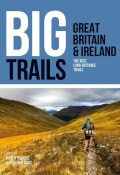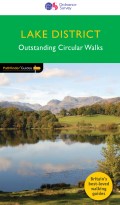Charmouth, Monarch's Way, Chardown Hill and Stonebarrow Hill
A fossil beach and dramatic landscape on the beautiful Dorset coast
Google Maps Open Source Maps| Statistics and Files | ||
|---|---|---|
| Start: Charmouth | Distance: 4.4 miles (7.1 km) | Climbing: 313 metres |
| Grid Ref: SY 36605 93136 | Time: 2-3 hours | Rating: Hard |
| GPX Route File | Google Earth File | The Jurassic Coast |
| Statistics | |
|---|---|
| Start: Charmouth | Distance: 4.4 miles (7.1 km) |
| Climbing: 313 metres | Grid Ref: SY 36605 93136 |
| Time: 2-3 hours | Rating: Hard |
| GPX Route File | Google Earth File |
Ordnance Survey Explorer Map (1:25,000)
The Walk:
This Jurassic Coast walk starts in the small seaside town of Charmouth. The rocky beach here is not good for bathing, but still attracts many people. They come to look for the fossil remains of ammonites and other prehistoric marine creatures on Charmouth Beach, relics of the time when this area was covered by a shallow tropical sea.
The best time for fossil hunting is after a storm when the gales bring new rocks crashing down from the cliffs, but the area is so rich that fragments may be found even at the height of the summer season.
 Footbridge over the River Char
Footbridge over the River Char Monarch's Way near Charmouth
Monarch's Way near Charmouth
The beach, like much of the course of this walk, gives excellent views of the coastline of Lyme Bay, stretching away south-west to Lyme Regis, and east to beyond the distinctive summit of the well named Golden Cap, the highest point on the southern coast of England.
From the beach, it is a steep climb to the cliff tops. As you climb, you skirt Cain's Folly, one of many landslips that have occurred along this notoriously crumbling coastline. The reason for the landslips is the underlying geology of the region. Porous rocks are sandwiched in between tilted layers of impervious clays and shales. Rainwater collects in the porous strata, and its weight causes areas to slide into the sea.
The scars left by these landslips are soon colonised by new vegetation. Because they are relatively inaccessible and useless as farmland, they make important new habitats for small mammals such as rabbits and foxes, as well as a wide variety of birds. Finches, tits, warblers, robins and woodpeckers all breed in these coastal enclaves, while kestrels hunt for voles and lizards all along the coast.
The route continues parallel with the cliff edge along the South West Coast Path through rolling cow pasture could buy small streams. The Monarch's Way lomg distance footpath shares this stech of coast too. The whole area is part of the Golden Cap Estate, which is farmed and managed by the National Trust, who make sure that fences, stiles, bridges and paths are well maintained.
 Chardown Hill
Chardown Hill Stonebarrow Hill
Stonebarrow Hill
The route leaves the coast and starts to climb steadily inland, past the well restored Ridge Barn to the hamlet of Upcot. Another climb, the last of the walk, takes you on to Chardown Hill. Here there is an opportunity for a well earned rest as you admire the views along the coast, and inland across the Dorset Hills. The path then runs along the spine of Stonebarrow Hill and leads you towards the National Trust Information Centre, which is housed in ta stone building that was once a radar station.
There is a wealth of wild flowers on the open heathland. Heather and gorse bloom profusely in late summer, and blackberries and butterflies are abundant. Much of this is due to the National Trust policy of limiting the use of pesticides and herbicides on its farmland.
From the Information Centre, you descend the way you came with views of Lyme Regis and its famous stone breakwater, the Cobb, ahead of you. If you time you return well, you will see the sunset over the sea, or the hills of Devon, depending on the time of year, as you return to the beach at Charmouth.
Acknowledgments: Text derived from the Out and Out Series; Discovering the Countryside on Foot. Pictures courtesy of Wikipedia.
Feedback and Suggestions: To suggest a link for inclusion on a this page please complete the Walking Englishman Feedback Form. Thank you.







